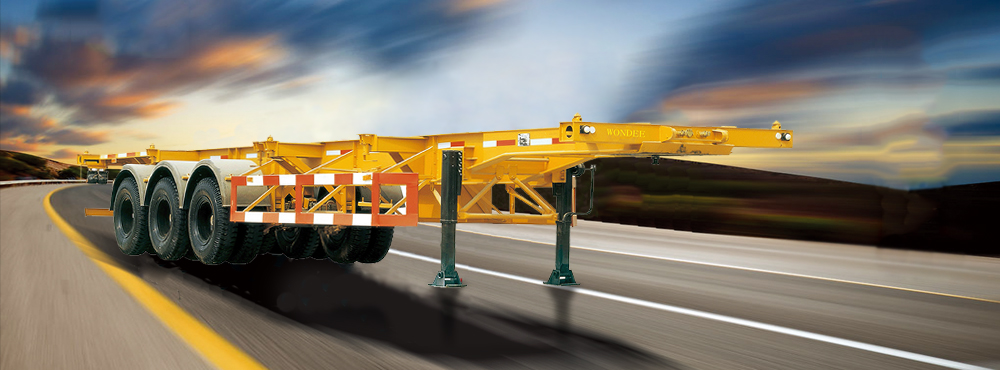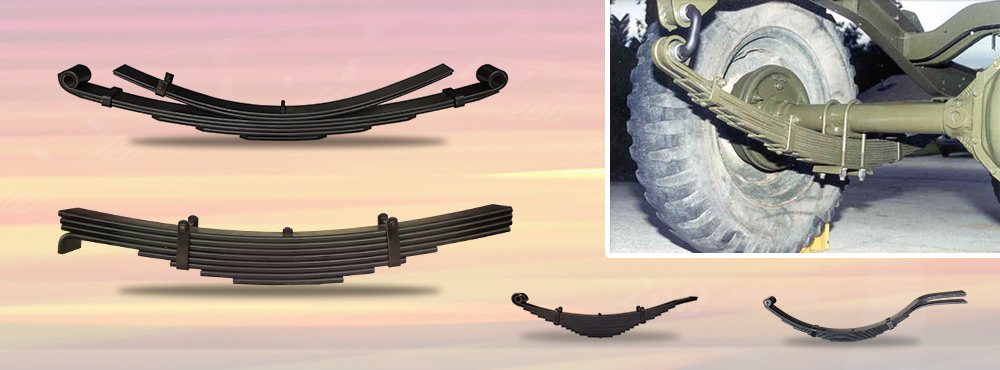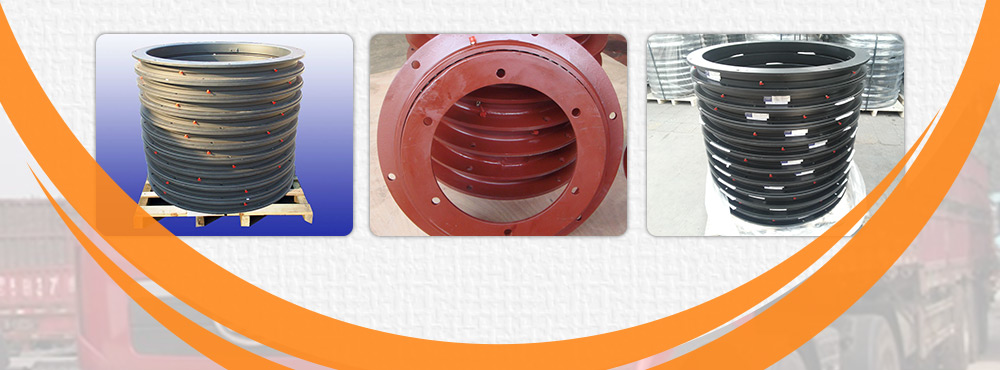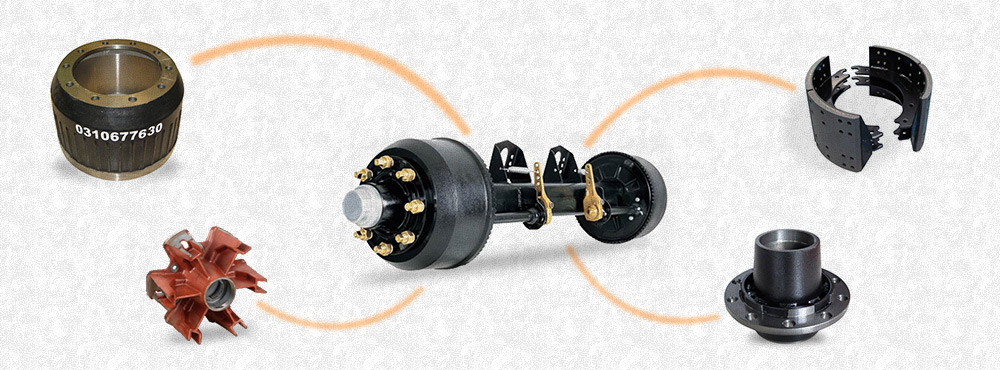Automotive service brakes must be able to stop the car, prevent excess-spedd when coasting, and hold the vehicle in position when stopped on grades. They are designed so that the braking effort can be varied by the driver to keep the vehicle under control.
To reduce the rotational speed of the wheel and slow the automobile, the service brakes force a stationary friction material, called a lining, against a rotation member, either a drum or rotor. The action of the friction material on the moving cast iron surface changes the kinetic energy of the moving vehicle into thermal energy or heat in the brakes. This heat is removed by moving air past the brakes.
The driver controls the force of the brake lining against the moving cast iron braking surface through mechanical, vacuum, and hydraulic mechanisms. Braking effect increases as the force transferred form the pedal pushes the stationary linings against the moving braking surface. Maximum braking occurs just before the wheel locks and the tire begins to slide on the road surface. Maximum braking, therefore,
depends upon the adhesion between the tire and the road surface. When the tire slides on the road, braking effort is reduced and directional control of the vehicle may be lost.
Braking Requirements
The brake system must provide smooth, predictable stopping power that is controlled by the operator. The required driver effort must not be excessive during a panic stop. To meet these braking requirements, minimum braking standards have been set or automotive brakes.
Braking Standards
These standards require the automobile to stop from a speed of 60 mph(96 km/h) with a minimum deceleration rate of 18 ft/sec² (5.5 m/sec²) without skidding as the brakes are being applied using a maximum service brake pedal effort of 120 Ib (534 N). The standards also include a high-speed stopping test made from a maximum speed of 100 mph (161 km/h) without skidding as a maximum pedal effort of 200 Ib (890 N) is held. The brakes must provide straight stops with no wheel pull, regardless of the road surface on which the automobile is being driven. Anti-skid braking (covered in Section 7-8) of the type used on the heavy trucks and some automobiles will stop the vehicle in a strait line even though the road surface adhesion may change from tire to tire. The brakes are required to function normally when they operate in environmental extremes that include hot and cold climates as well as dry or humid climates. The environment in which the brake operates is constantly hanging -- not only the different climatic conditions, but also different local weather and road conditions. The brakes are subjected to dampness while being dampness while being driven over rainslicked highways and to dirt and dust while being driven over unpaved roadways. They must have the ability to recover their normal braking action after being wet. They must also be able to function in a dusty and dirty environment without adverse effects on the braking action.
Heat Load
The brakes are subjected to high heat loads. Heat results from the large amount of kinetic energy that is changed to thermal energy during braking. Brake temperatures may exceed 500°F (260°C) during a hard stop from cruising speed. The brakes must have the ability to work in these high temperatures and still exhibit little fade. Fade is a condition that occurs when there is little braking effect with full brake pedal force. This condition results from the temperature rise in the brakes that becomes excessive within the wheel brakes as a result of a number of frequent severe stops.
Brake Design Conditions
Wheel brakes are designed to occupy a minimal amount of space at the wheel so that small wheels and tires can be used on the vehicle. At the same time, enough space must be present to allow the heat to transfer away from the brake system to keep the brake temperature low enough to brake without fade. If the braking surface were not cooled as quickly as possible, the temperature of the brake would rise to the point that brake fade would occur.Brake components are designed to function well at high temperature. When the heat transferred to the atmosphere surrounding the brake is less than the heat developed while braking, the temperature of the brake components will rise. Brake drums, which absorb a great amount of heat during braking, may rise in temperature to more than 600°F (315°C). This high temperature will cause an increase in diameter of the drum braking surface, due to thermal expansion, as illustrated in Figure 6-1. This results in a greater required movement of the brake shoes to maintain contact with the braking surface. The effect of the added shoe movement is a low brake pedal height. The pedal height with the brakes applied is called the pedal reserve. The heat absorbed by the brake linings increases their temperature to a point where the binders and saturates (page 86) liquefy within the lining itself and are forced to the surface by the pressure of the lining against the drum. The liquefied lining ingredients serve as a lubricant between the lining and brake surface resulting in reduced braking effect. Excessive overheating may also cause the brake fluid to boil within the hydraulic system which results in the vaporization of the brake fluid and this, in turn, causes a soft or 'spongy' pedal feel.
Brake Fade.
Fade is more common on drum brakes than on disc brakes. Disc Brake rotors expose the braking surface directly to the atmosphere which results in rapid cooling. The rotor, when heated during braking, does not expand in the direction of lining travel. This can be seen in Figure 6-2. The expansion of the rotor in the radial direction does not affect the brake pedal height. Lining temperatures of the disc brake may rise to the point where the binders and saturates liquefy but the rapid cooling cycle of the rotor prevents this from causing a loss of braking action.The close proximity of the lining to the hydraulic caliper cylinder in a disc brake as compared to a drum brake causes some of the heat to be absorbed by the cylinder and hydraulic fluid. This heat will increase the temperature of the fluid. Excess temperature will cause the brake fluid. This heat will increase the temperature of the fluid. Excess temperature will cause the brake fluid to boil and this will produce a soft pedal feel, just as it does in systems using drum brakes. The disc brake requires
a high-temperature type brake fluid to prevent the fluid from boiling while under the high heat loads that are normal for disc brakes. During the early stages of disc brake development, boiling brake fluid was a problem. Changes in brake caliper design and brake fluid boiling points have nearly eliminated this problem in modern automobiles.















